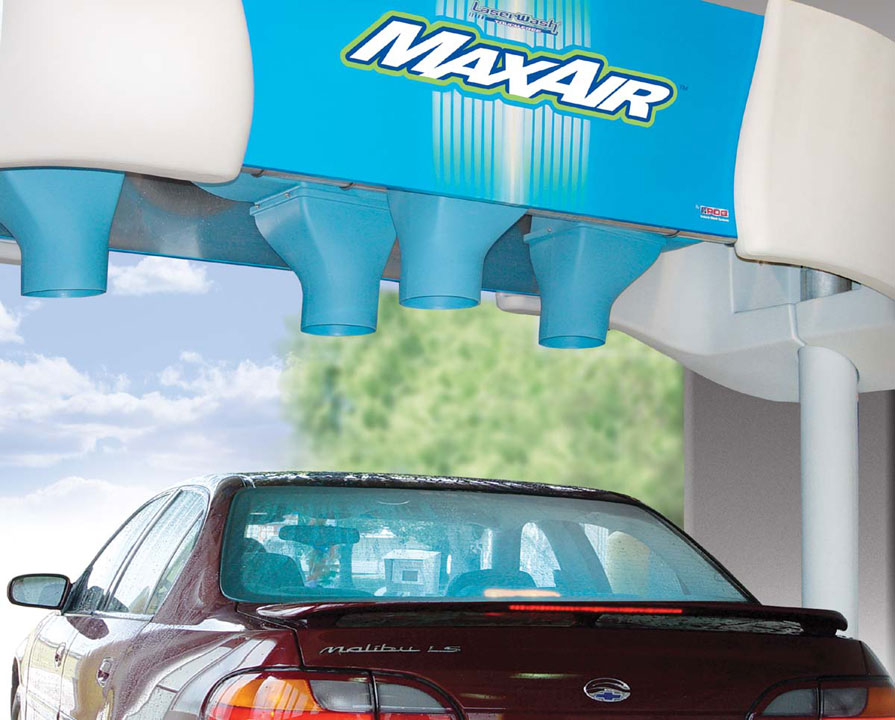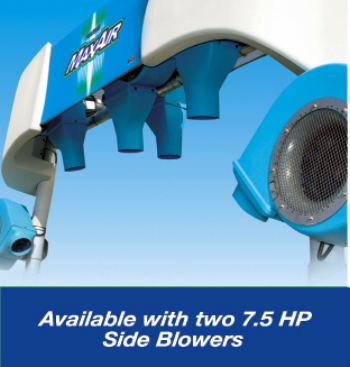
How do you get the driest car ever? Do you use more chemical? Change chemical? Move the dryers closer to the last liquid arch or closer?
The ultimate answer may be a story of less is more. Everyone knows that a drying agent is the key to drying a car in a tunnel or an automatic car wash. By following these tips, an operator can obtain a vehicle that is “drier” by the end of the drying process.
Step 1: Of course, you need to start with a product designed properly to dry a car and not just bead the surface. All drying agents function differently, and the cost and performance of these varies tremendously within a company’s line and amongst competitors. My advice to an operator is to shop with a reputable national provider who has experience in hundreds of washes. Once you identify a leading company, work within their product range to identify a product that leads to the best results for your operation.
 Step 2: Make sure that your chemical level is optimized- which might mean turning it down! Why would you want to use less chemical? If a drying agent isn’t working well, wouldn’t it make more sense to turn it up? Within some limits, the reality is that sometimes using more chemical leads to a less dry car. Most service representatives are not aware of this trick of the trade and will turn up the chemical more and more trying to achieve a drier car. This can leave you with higher costs and a wetter car. Reducing the amount of drying agent can actually improve drying. For example, using a product such as Cool Dry from Blendco, a popular drying agent, at a ratio of water to chemical of 400:1 leads to the fastest drying time unit of 4.9 seconds- a 30% reduction vs. using a 200:1 ratio. In this case, the 4.9 seconds measures the amount of time it took for gravity to drop 90% of the water off of a vertical surface. The results? Half as much leads to a 30% improvement in drying. A reputable carwash detergent company should be able to look at the gallons of water used to find the ideal ratio and then verify the ratio through field experimentation.
Step 2: Make sure that your chemical level is optimized- which might mean turning it down! Why would you want to use less chemical? If a drying agent isn’t working well, wouldn’t it make more sense to turn it up? Within some limits, the reality is that sometimes using more chemical leads to a less dry car. Most service representatives are not aware of this trick of the trade and will turn up the chemical more and more trying to achieve a drier car. This can leave you with higher costs and a wetter car. Reducing the amount of drying agent can actually improve drying. For example, using a product such as Cool Dry from Blendco, a popular drying agent, at a ratio of water to chemical of 400:1 leads to the fastest drying time unit of 4.9 seconds- a 30% reduction vs. using a 200:1 ratio. In this case, the 4.9 seconds measures the amount of time it took for gravity to drop 90% of the water off of a vertical surface. The results? Half as much leads to a 30% improvement in drying. A reputable carwash detergent company should be able to look at the gallons of water used to find the ideal ratio and then verify the ratio through field experimentation.
To get the driest car ever, follow one or both of the above steps. Use the right chemical from the right company (a reputable company with a well-designed and researched product) and then use the optimized amount of that chemical. Find a great supplier/distributor who will work hard, be creative and leave you with results that are exceptional. A great supplier may not have the lowest price- but they may have the lowest cost approach with the best results!
Step 3: A third step may surprise you. To get a drier car, you can use less drip time and space. You may be thinking, “Don’t you want to let the water drip off the vehicle before you begin drying it in order to reduce the water left on the vehicle before the dryers turn on?” Over the last several years, industry experts have discovered the concept of “flash drying.” This method of drying is resulting in some of the driest cars in the history of car washing. The theory behind this practice is to add a curtain of water to the car immediately before the drying process begins. If the car has been prepared properly with the correct amount of a highly functional drying agent, the curtain of water will literally wipe itself dry as the blowers push the water off the car. Picture how much easier it is to blow a bead of water vs. a tiny speck of water. The speck is basically glued to the vehicle, but it is easy to blow a bead off the car, leaving a dry surface behind.
If you want to try flash drying at your car wash, here’s how. In a tunnel environment, you need to either move your last rinse arch just before the dryers or move your dryers closer to the last rinse arch. The former is typically the easiest to implement. In an automatic car wash, you will ideally dry the car an instant after and during the final rinse stage. This is typically only possible on automatics designed to be able to support flash drying while rinsing is occurring. It’s hard to believe that a “wetter” car can lead to a “dryer” car, but it’s true! Flash drying is available on the new Laserwash 360 from PDQ. See it to believe it!

